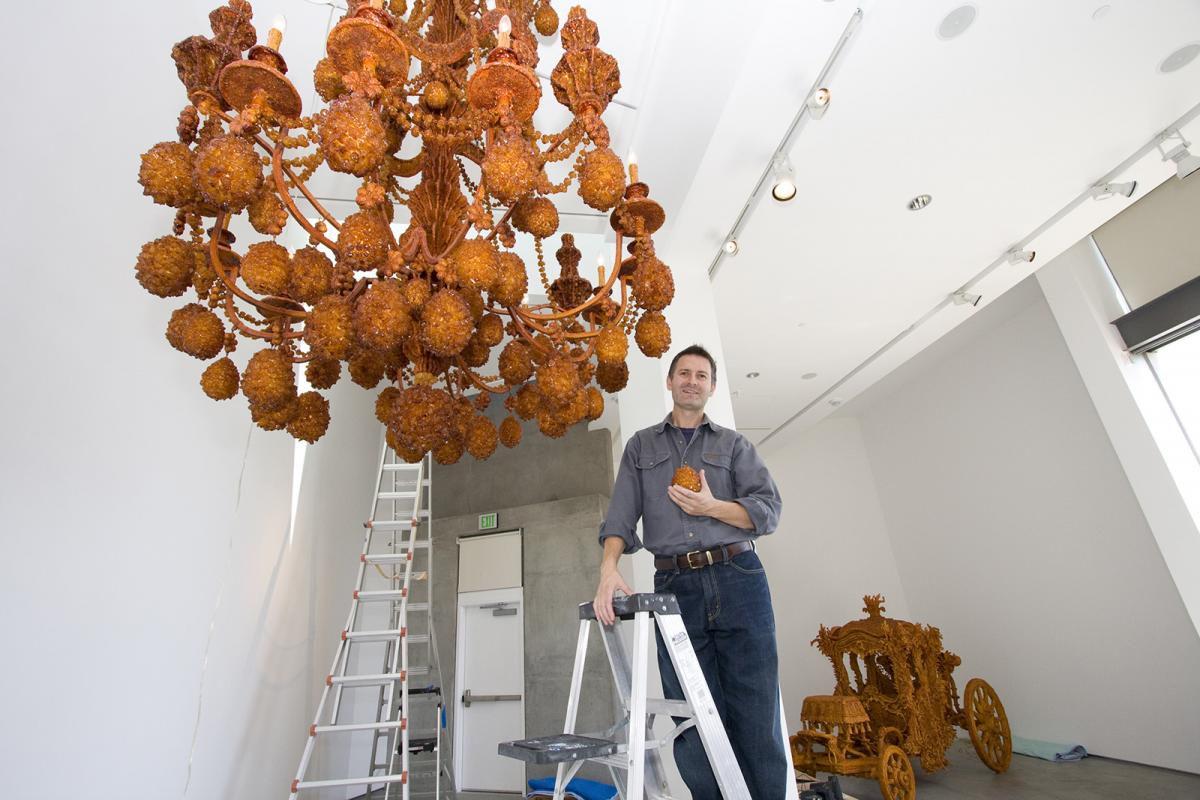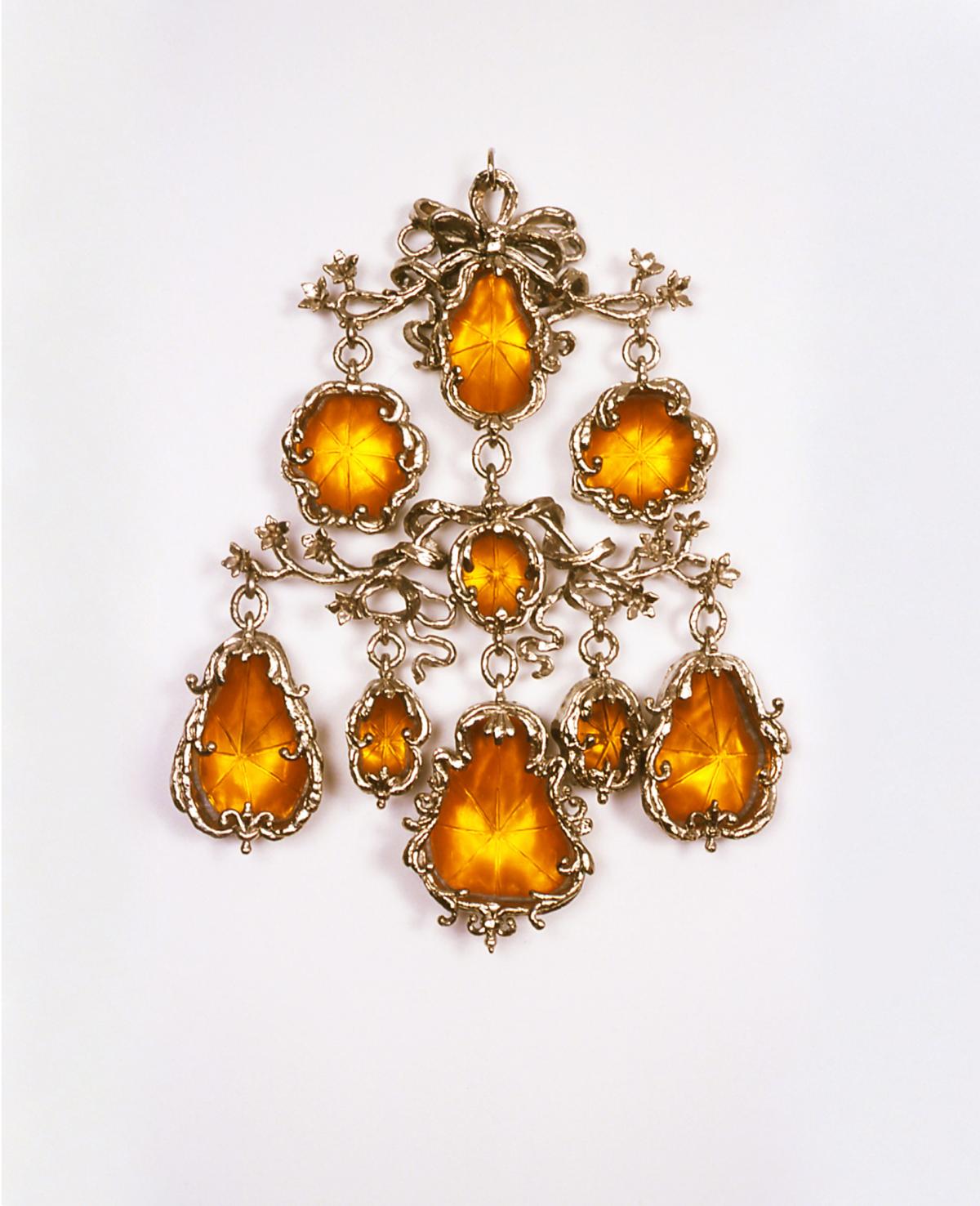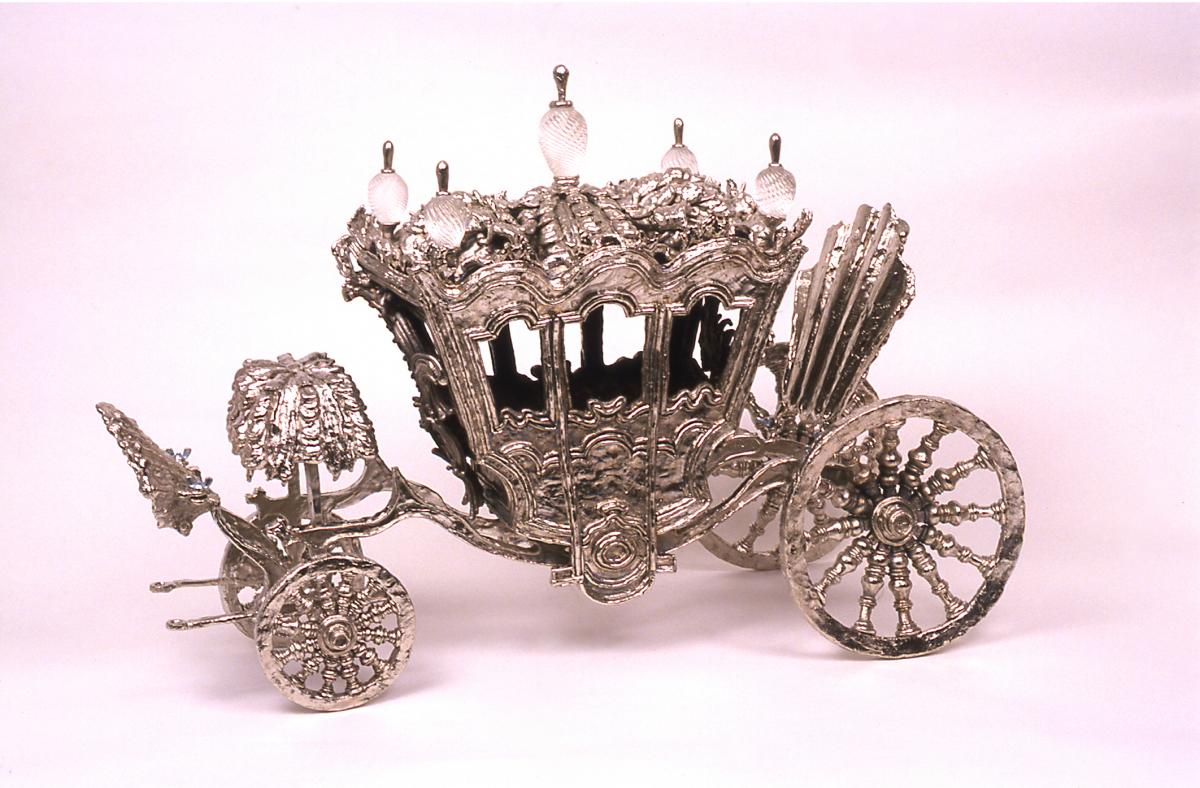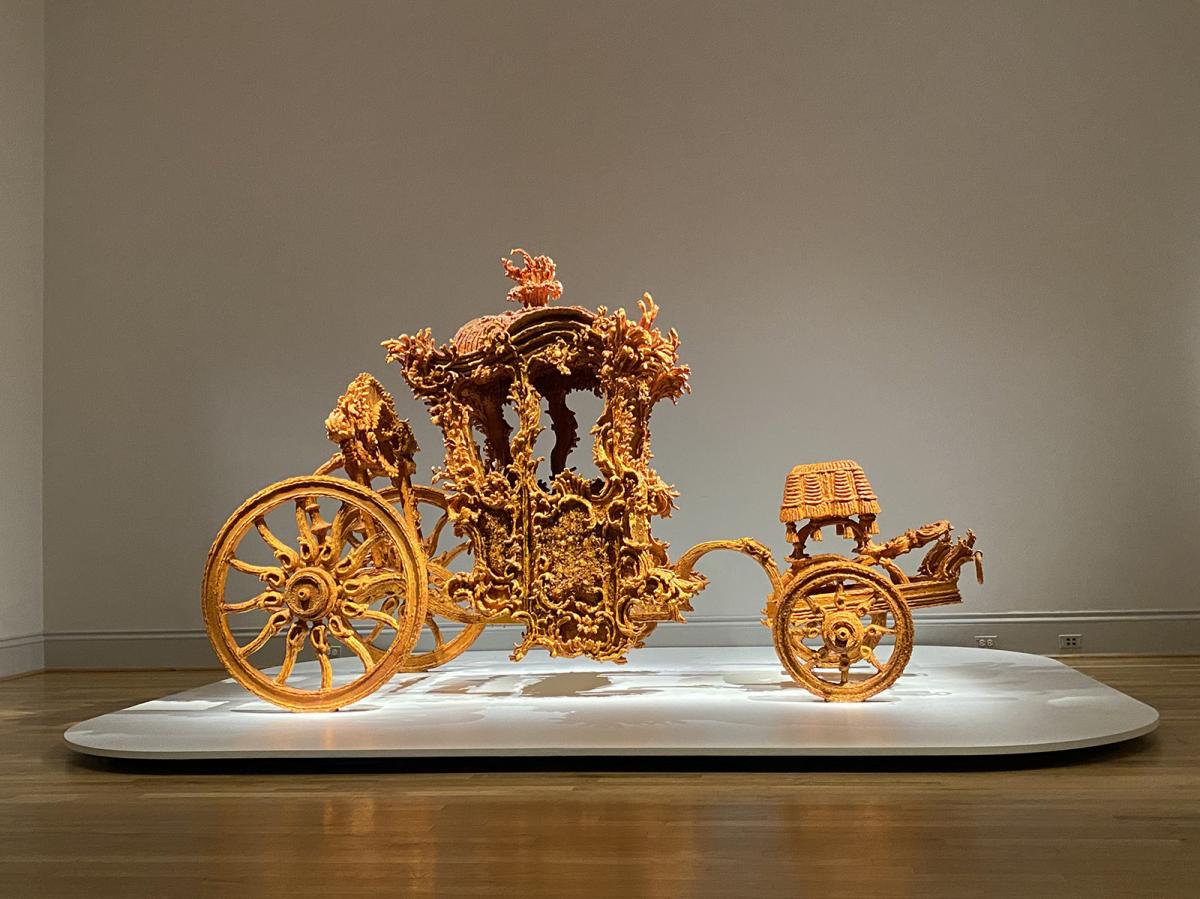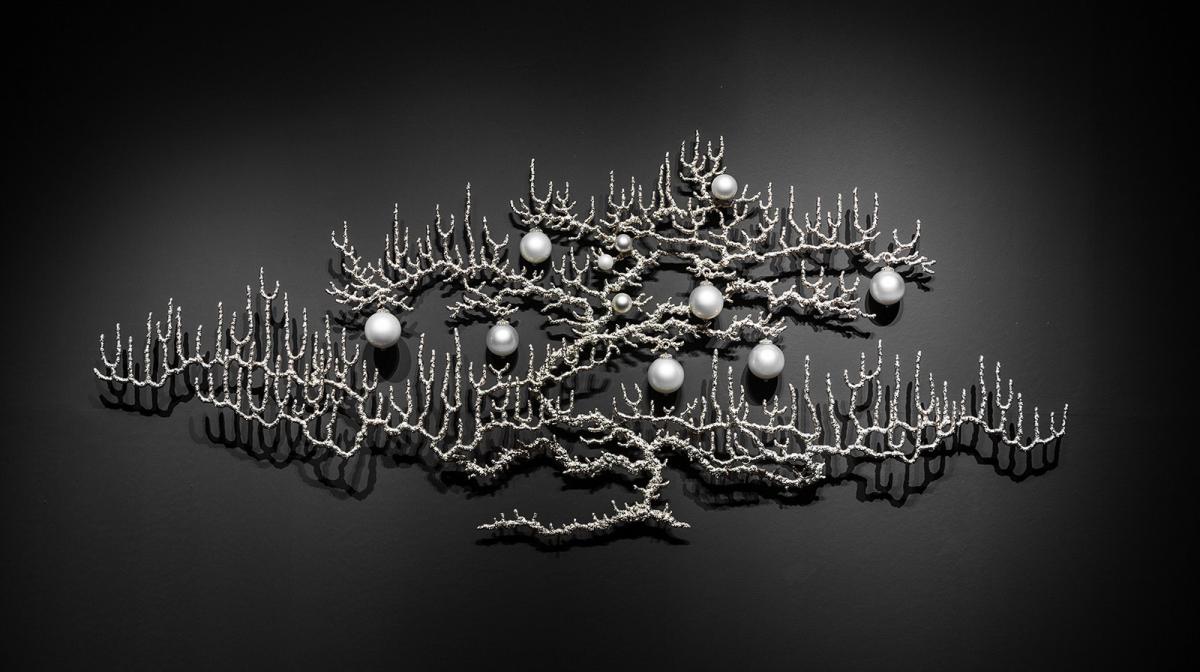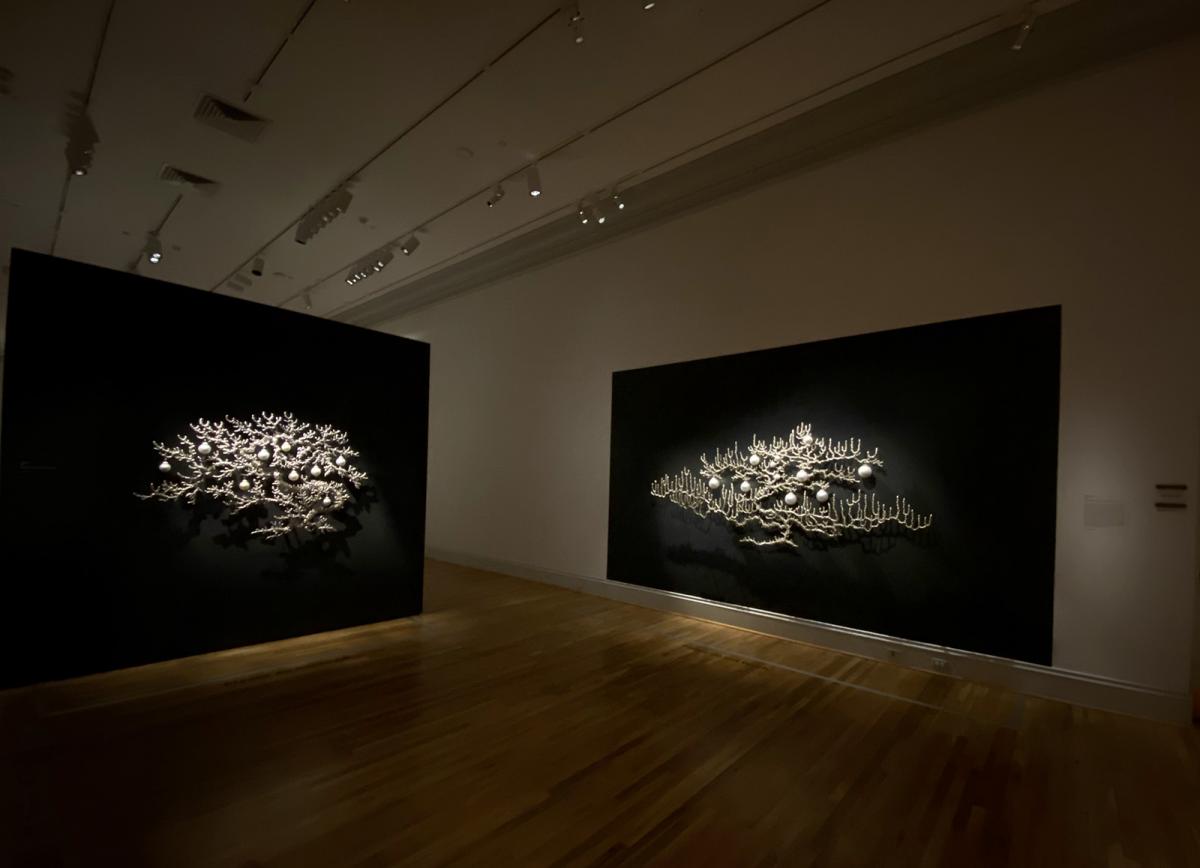As we continue to celebrate Pride month and honor LGBTQ+ artists in SAAM’s collections, exhibitions, and beyond, I found myself drawn to thoughts of what inspires and shapes the artwork and career of Timothy Horn. Horn is one of the four artists featured in Forces of Nature: Renwick Invitational 2020, currently on view at the Renwick Gallery. He creates striking, exaggerated sculptures and adornments that are derivative of the natural world, referencing history, fairytales, and decorative arts. Drawing inspiration from seventeenth-century jewelry patterns, baroque aesthetics, and nineteenth-century studies of lichen, coral, and seaweed, Horn incorporates traditional materials, such as bronze and glass, as well as surprising elements, like crystallized rock sugar. Horn repeatedly turns to centuries-old decorative art traditions to explore themes of gender power dynamics, LGBTQ+ identity, social and cultural constructs, and the impact of human activity on the natural world. Representing both deeply personal and global perspectives, Horn’s work has evolved throughout his twenty-plus-year career to evoke the tension of unresolved conflicts and imbalances of power in both the human and natural world that often inform and confront our lives.
During his early career Horn used the tradition of decorative arts to explore themes of gender, sexuality, social structures, and power. In his 2001 solo exhibition Cinderella Complex Horn presented ornamentation through the magnified lens of a queer retelling of the Cinderella myth. His work addresses the longing for acceptance, love, and a “happily ever after” within twentieth- and twenty first-century gay culture.
Stefano Catalani, executive director of the Gage Academy of Art in Seattle and member of the selection committee for Forces of Nature, characterizes this exhibition as Horn’s “artistic coming out.” In the Forces of Nature accompanying book, Catalani concludes that the fabrication of each piece helped Horn process his identity as a gay man. “The sculptures address queerness and gay culture by drawing a visual connection between the decorative — ‘a taboo to be avoided’ in the art world — and the taboo of homosexuality, which sodomy laws made illegal in Horn’s native country of Australia from 1788 to 1994.”
With artwork titles like Love Muscle, Boy Pussy, Bump N’ Grind, Horn tells the tale of a gay man’s search for validation and a fictitious Prince Charming. These same fairytale notions are later alluded to in the 2008 sweetly embellished Napoleonic carriage Mother-Load, featured as part of Forces of Nature.
With Cinderella Complex, Horn also started playing with the size and scale of his adornments to exude a camp irony and larger-than-life glitzy queerness that was impossible to avoid. Catalani characterizes this use of scale as a “proxy for gay men’s desire to be accepted for what we are, each of his bejeweled pieces asks to not be ignored or, worse, dismissed. As a result of such adroit exaggeration — and the need to resort to it — the exhilarating spectacle of the first glance leads to a slightly bitter aftertaste of unfulfilled want.” This exhibition laid the formal foundations of Horn’s body of work over the next 20 years and set him on a path of re-contextualizing the decorative arts through shifts in scale and medium.
Horn’s work in recent years has shifted from focusing on identity dynamics to examine the universal relationship between humanity and the natural environment. Horn explained that “in my 20s and 30s, I was representing what was important to me as a young gay man. Series such as Cinderella Complex helped me move on.” Today, Horn still turns to decorative arts as a primary source of inspiration. However, in his most recent series Tree of Heaven and Gorgonian, Horn draws influence from seventeenth- and eighteenth-century earrings and pendants designs, as well as natural organisms like lichen, coral, and jellyfish as illustrated by nineteenth-century biologist-philosopher Ernst Haeckel in his book Kunstformen der natur (Art Forms in Nature). In this new phase of work, Horn has been inspired to address issues like climate change and habitat destruction after a trip to the Great Barrier Reef with his partner, Arthur. There, they witnessed first-hand the devastating effects of global warming and sun bleaching on wildlife and natural habitats of the reef.
The bronzed adornments Gorgonia 12 and Gorgonia 17 represent fan-like forms of soft corals with larger-than-life pearls dripping off delicate branches. Their construction represents a lovely juxtaposition between the fragility and strength of our environment. Other works in this series, such as Gorgonia 4 (Fukushima Fan Dance), Gorgonia 6 (Bikini Atoll), and Gorgonia 7 (Sea Change), have titles that evoke the ghosts of nuclear testing and disasters, as well as changes caused by pH and ocean water temperature changes.
Horn endeavors to communicate an optimistic view of strength. Catalani describes how these works depict “nature’s ability to recover from the toll of human consumption and destruction not just by means of timeless beauty, but also with the visual reference to man-made objects. Here he uses the recognizable opulence of jewelry to suggest that nature — represented by the shape of coral or a tree — has the power to assimilate, metabolize, and survive the history of these man-made objects, the very ones that humanity has gone to great lengths to create while decimating the planet in its wake.” These artworks are symbols of destruction and survival while existing in the “murky territory between beauty and ugliness.”
Like the works in the Cinderella Complex series, Horn’s newer works borrow from the realm of decorative arts and feature dramatic shifts in scale. Rather than addressing larger-than-life fantasy and the desire to be accepted, here monumental scale is employed to dwarf us before a peaceful image of nature's resilience in the face of profound, human-imposed environmental shifts.
Forces of Nature: Renwick Invitational 2020 is on view at the Renwick Gallery until August 15, 2021. Learn more about Timothy Horn and his work by watching our video: “Meet the Artist: Timothy Horn from Forces of Nature Renwick Invitational 2020”















